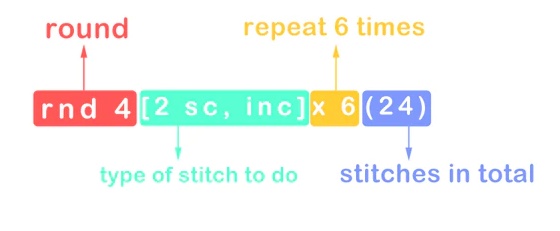How to read a crochet pattern
When you first look at crochet patterns, they might seem like an indecipherable code. This is due to their heavy reliance on abbreviations, which not only save space but also simplify the process of following the pattern. As you get the hang of it, you'll start to value the succinctness of crochet patterns and eventually master reading them. When it comes down to it, there are just two main points to remember when interpreting a crochet pattern:
1. Common Abbreviations for Crochet Terms
- sc: single crochet
- dc: double crochet
- hdc: half double crochet
- tr: triple crochet
- ch: chain stitch
- sl: slip stitch
- Yo: yarn over
- MR: magic ring
- FLO: front loop only
- BLO: back loop only
- dec: decrease
- inc: increase rnd: round
2. How do you read crochet patterns?
Different crochet pattern designers use different formats to convey their instructions. This is also usually defined at the beginning of the pattern. You can expect that there will be repetition of stitches, which is probably the most confusing part to reading a pattern. Some patterns use brackets ((…), […]) or multiplier indicators (*, x), to convey which stitches you should repeat and for how many times.
Crochet patterns by PLOXGLEM are written in US terminology, and follow this format:
Rnd 4: [2 sc, inc] x 6(24)
This means that for round 4, repeat the sequence of [2 sc followed by 1 inc] a total of 6 times.
Which also could've been written as:
[sc,sc, inc] [sc,sc, inc] [sc,sc, inc] [sc, sc, inc] [sc,sc, inc] [sc,sc, inc]
Or with a lot more words:
[2 single crochet stitch in the first two stitch, then 2 single crochet stitches in the next stitch] for a total of 6 times
(Are you starting to dig abbreviations yet? 😉)
Since 1 increase stitch = 2 single crochet stitches, 1 increase stitch counts as 2 stitches. 1 single crochet stitch counts as 1 stitch.
Therefore, that's [3 stitches] repeated 6 times, for a final count of 24 stitches.

